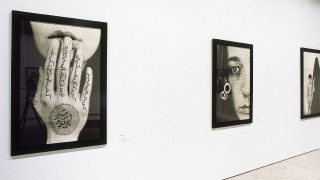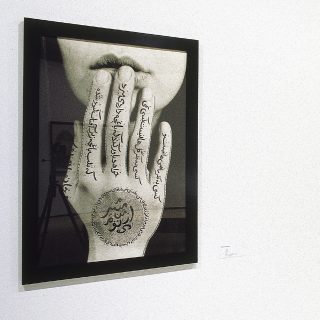Espoo Museum of Modern Art


13.10.2006 - 07.01.2007
Shirin Neshat: Secret of the Veil
The central theme of Shiran Neshat’s work is Islam and the position of women in Islamic society. In her art she treats serious issues, which in the diaspora an artist living between two cultures confronts – exile, repression, the role and identity of women.
Shirin Neshat (born 1957) grew up in Iran but moved to California in 1974. She did not return to Iran until 1990 by which time Iran had become an Islamic republic. A revolution had taken place in the country and the impact this had had on the life of women in particular greatly affected Neshat’s art. Today Shirin Neshat lives and works in New York.
The central theme of Shiran Neshat’s work is Islam and the position of women in Islamic society. In her art she treats serious issues, which in the diaspora an artist living between two cultures confronts – exile, repression, the role and identity of women. Neshat began by photographing political subjects in black and white. In her well-known photographic series Women of Allah (1993-1997) she studied different philosophical and ideological themes raised by the Islamic revolution. Neshat herself put on the black chador and photographed herself in different female roles – martyr, soldier, wife, mother. On the skin left bare in the photographs by the chador she inscribed Pharsee calligraphic texts.
Since the end of the 1990s the moving picture has played an increasingly important role in Shiran Neshat’s art. In her video works she combines the themes of her earlier photographs. The works Turbulent and Rapture treat the dynamics between Iranian men and women. The works are two-channel video projections built on the dualism characteristic of Neshat’s work; man/woman, black/white and are shown on two opposite screens. Passage is a one-channel video work built on powerful colour contrasts and was carried out in co-operation with the American composer Philip Glass. In the work the artist ponders the theme of death and associated rituals such as burial and the funeral procession. Life and experience are important aspects of Shiran Neshat’s work.
The aesthetic language used by Neshat is characterised by combining old and new. Since 2003 she has been working on a five-part film video series based on Sharnush Parispur’s surrealist short story collection Women without Men (1989). The book follows the story of five women who leave their former problem-fraught lives and end up in the same garden. To date the parts Mahdokht and Zarin have been finished. The works differ from Neshat’s earlier works in that they are narrative, with spoken dialogue, stories with a magical realism.
Shiran Neshat is one of the foremost women artists of our time and the winner of many international awards. At the time of Emma’s opening, 12,10,2006, she will receive with the Lilian Gish award in New York.
SECRET OF THE VEIL 13.10-7.1.2007
Emma’s inaugural exhibition provides the first opportunity to see Shiran Neshat’s work in Finland. The exhibition presents the video works Turbulent (1998), Rapture (1999), Passage (2001) Mahdokt (2004) and Zarin (2005) as well as photograph series.